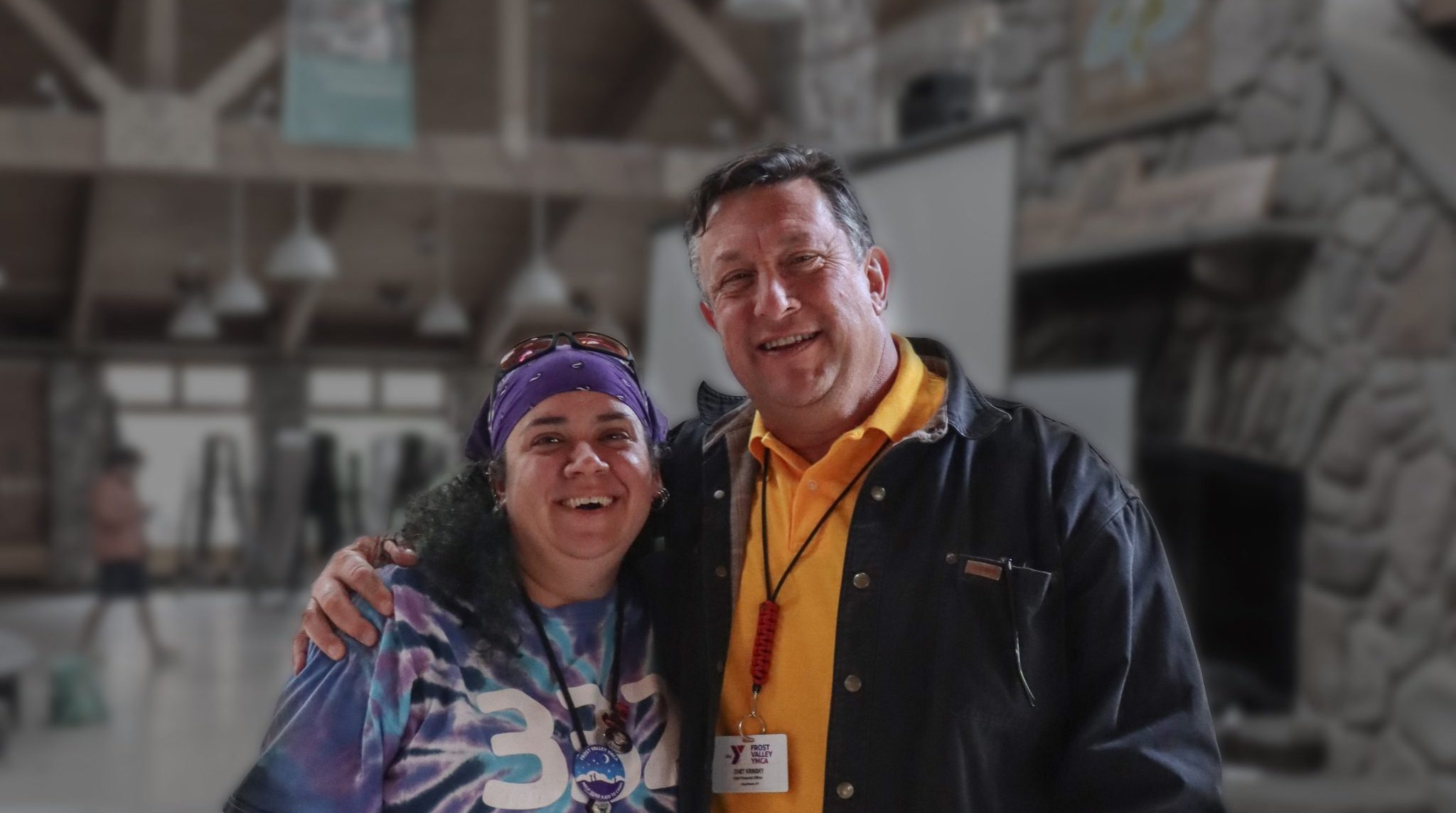
A Closer Look at a Sustainable Choice
What is meant by “living sustainably”? Simply put, the idea of sustainable living refers to existing in a way that can be continued indefinitely without exhausting available resources. Sustainable practices can play a key role in decreasing humanity’s negative impact on the planet’s ecosystems. Very few people practice this lifestyle completely in today’s society. However, just keeping it in mind and taking steps to reduce the resources needed to fuel your lifestyle can have a measurable effect on the health of the planet. The more people that jump on board with this idea and attempt to make little changes, the more exponential this positive progress will become. A goal of the Frost Valley and the Earth blog is to not only share ways that Frost Valley incorporates sustainable practices into our operations, but also ways that everyday people can incorporate sustainability into their lifestyles. Actions like shopping at local farmer’s markets, carpooling, and planting a garden are all examples of things people can do to adopt a more sustainable existence.
With the cool winds of autumn just around the corner, another way to introduce sustainable practices will be starting up in the Castkills – although many will find it surprising. Hunters everywhere are planning for the start of deer season. After several years of interacting with guests at Frost Valley, I have noticed that many people are surprised to hear we have a hunting program. To some, the idea of hunting deer as a sustainability measure may initially seem counter intuitive. We are trying to protect and preserve the natural world so why harvest wildlife from it? In this post I aim to address this question with the help of my own personal experiences. I hope to share not only the scientific reasoning behind Frost Valley’s hunting program but also the ethical perspective behind my personal choices regarding hunting in general.
An easy place to start is with the ambition of lowering one’s carbon footprint. An interesting fact behind this goal, as it relates to hunting, is that a hunter can eat venison knowing that the process has left almost no carbon footprint other than the electricity used by the freezer (which here at Frost Valley will soon be solar powered). The same cannot be said for most varieties of meat, or even vegetables and grains, sold in stores. Any farm raised food creates a carbon footprint at several levels of production. When it comes to meat (or any food), getting it from small local farms is always better for the environment. The sustainability-driven reasoning behind this point is the same reasoning behind many people’s choices to harvest meat from the woods on their own property. Not only that, but it’s more likely the deer lived a happy, humane life. It was raised by its own mother, and lived in the wild.
The locavore movement, as it has come to be known, is fundamentally rooted in the concept of sustainability. The deer population is – without question – sustainable in this country. As more and more forested land is cleared for neighborhoods and farm fields, the habitat actually becomes more desirable for deer. A suburban area typically has a higher deer population than a heavily forested area due to the abundance of food. The plants in everyone’s lawn, garden and landscaping are potential food sources for deer. As a result of suburban sprawl and agriculture, North America now has more white-tailed deer than it did prior to European settlement.
A fact that is important to consider is that here in New York, as well as many other states, most predators that feed on deer have been removed. Historically, New York was home to wolves and mountain lions. Neither of these animals are found in New York today. The occasional report of a mountain lion may surface every now and then but these are few and far between. Wolves have, however, been replaced by coyotes, but they rarely prey on adult deer. Don’t be misled, it does happen, and coyotes do frequently prey on fawns. However, this is still nothing compared to the level of predation that was formerly seen from wolves. As a result of this decrease in predatory animals, among other factors, humans can play a crucial part in the responsible management of the deer herd.
Management doesn’t have to always mean decreasing the population; in some cases, taking measures that would facilitate an increase in the population for a certain area may be required. Various techniques can be used to achieve specific management goals. Restricting or targeting the harvest to animals from a specific sex or age class is just one example. Either way, the deer herd isn’t self-regulated by nature like it used to be. But we humans should be thinking of ourselves as a part of nature too, and we can help. Humans are here and I don’t think we are planning on leaving New York State any time soon. We need to take steps to manage our natural resources responsibly.
Why is an overly large deer population a concern? If we want healthy forests, we can’t have an overabundance of deer. Deer eat young forest regeneration. Too many of them can have a destructive impact on the entire forest ecosystem. In a healthy hardwood forest with a high carrying capacity for wildlife, vegetation can be seen at all stages of growth. Trees and shrubs of all heights and sizes are present. For the age and forest type of most of our northeastern forests, this is what we should be seeing. In an area allowed to develop an overabundance of deer you will notice a very different looking forest, one with virtually no regeneration. Any regeneration that does occur in heavily browsed forests will likely consist only of species that are less desirable to deer. This limits forest diversity and causes a select few species, often invasive, to dominate the understory. In regard to deer impact, the Nature Conservancy has stated:
“No other threat to forested habitats is greater at this point in time – not lack of fire, not habitat conversion, not climate change. Only invasive exotic insects and disease have been comparable in magnitude. We can argue about which threat is more significant than another, but no one who walks the eastern forests today can deny the impact of deer to forest condition.”
If you have ever walked into a hardwood forest in any part of the state and noticed that all you see are tall trees without much vegetation under six feet high, you can bet more deer live in the forest than it can support. This means that a new generation of trees is not growing! This is a problem for every animal that calls the forest home, including deer.
Here at Frost Valley, we strive to keep the deer population at the right balance for our forest ecosystems to thrive. Estimates and opinions can vary as to the best deer density for a given forest. Certainly, no “one size fits all” number exists. Every forest is unique. Many places in the U.S have upwards of 40 deer per square mile, far too much for any forest. Our deer density survey for this year places our estimated population at around 11 per square mile. This has been accomplished mainly by encouraging our hunters to harvest mature does rather than young bucks through New York’s Deer Management Assistance Program. This has certainly helped the regeneration rates of our forest undergrowth. From the management side of things, we don’t limit our efforts to trying to keep deer numbers in check. We also actively try to increase the carrying capacity of the forest. We take measures such as planting food plots to increase forage for deer and we carry out forestry projects aimed at improving wildlife habitat.
Some may wonder… Is deer hunting humane? This is a very valid question. It is a question that must be asked by every hunter. The most direct way that I can answer this question is to provide a list of alternatives for deer mortality in the wild. A deer in the Catskills can die in a few different ways. Motor vehicle collisions are extremely common. Starvation and freezing to death as well, these go hand in hand with one another, as the former usually leads to the latter and both can result from too many deer, too little food. Predation from coyotes is another cause of deer mortality. If anyone has ever seen this take place or witnessed the aftermath, they know that coyotes have no objective of going about it humanely. Old age leads to all of the above. Lastly, the final way a Catskill deer can be killed is by a careful shot from a hunter. So whether or not deer hunting is humane is something you may need to consider and decide on your own.
I started hunting three seasons ago, and the experience has fostered in me a greater sense of connection to the land than anything I have ever done. I have become part of the ecosystem, part of the food web – not separate from it and looking in from a sterile and disconnected perspective. It has also given me a deeper appreciation for food, where my food comes from, and what it means to eat meat. I will never take food for granted again. I choose to harvest wild deer from the Catskill forests not only because I believe it is a humane way for a deer to come to the end of its life, but also I know that my food lived a humane, natural life. Everyone has the right to make their own personal decisions about the food they put into their body. I certainly don’t judge or criticize anyone for their eating habits or food choices. Ten months have passed since my 2016 harvest and I am still eating the venison from that deer. In that time I have not purchased any beef from the grocery store. From my perspective, that is a success not just for me personally, but for the sustainability and stewardship of our planet.
We can all do many different things to care for the earth and its inhabitants, and we each have to decide what actions are aligned with our own personal values and beliefs. We hope you’ll continue to learn more about unique ways to be stewards of the earth and decide which ones you can take on.
Opening day of bow season is October 1st, and certain off-camp zones of Frost Valley will be open to hunters enrolled in our Outdoor Sporting Program. Frost Valley’s hunting program is a relatively small program, with typically around 60 hunters registered as participants on a given season. For over 5,600 acres, that’s not many. All hunters at Frost Valley must undergo a full background check and have a staff sponsor who is willing to vouch for their character. They must follow our specific set of rules and regulations in addition to those laid down by the state. As you’ve read here, the hunting program at Frost Valley fulfills an important role in the land management of our property.
ABOUT THE AUTHOR
Dan DeChellis
Growing up in his home state of Pennsylvania, Dan acquired a love of the outdoors at an early age. He is the Natural Resources and Environmental Science Coordinator at Frost Valley. Throughout his time at Frost Valley, Dan has worn many hats and developed a deep connection with the land. He is thrilled to be part of the management and stewardship of the place he has grown to love.
More posts by Dan DeChellis
Categories
- Posts
- Comments
#frostvalleyymca



















Comment